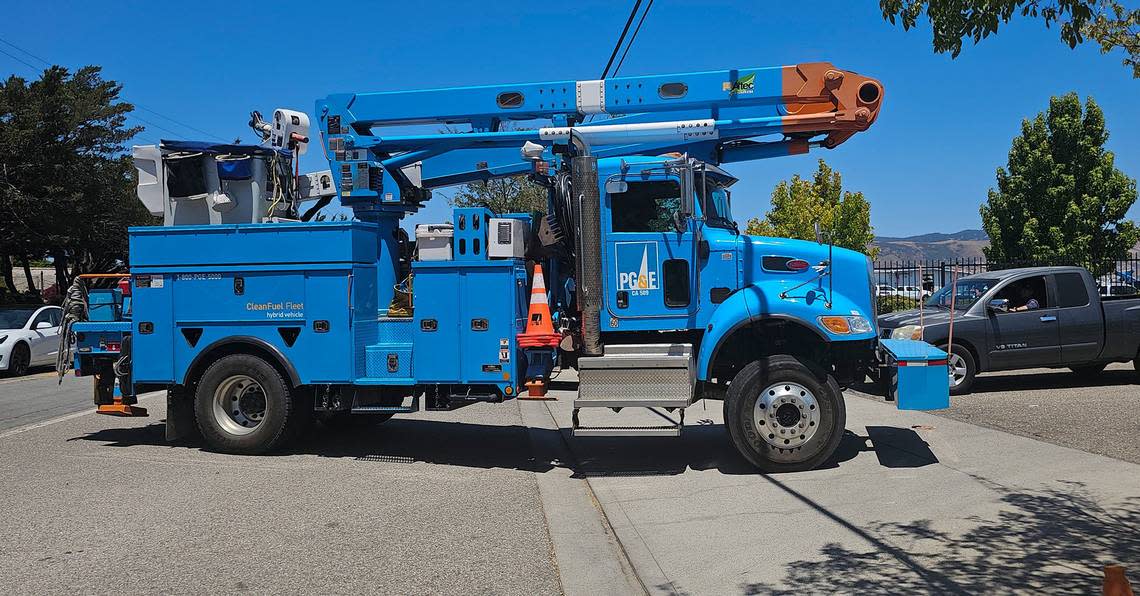PG&E says it’s committed to reducing our energy bills. Should we believe them? | Opinion

PG&E feels our financial pain. It says as much, right there on the outside of its billing envelope.
In bold print, next to the address window, is this message: “We’re committed to lowering your energy prices.”
This, from the investor-owned utility that has some of the highest rates in the nation — partly as a result of its ambitious plan to underground thousands of miles of electric lines in fire-prone areas.
So what’s going on?
Is PG&E — the company led by a CEO who aspires to “lead with love” — really trying to cut energy costs? Or is its “commitment” a load of baloney?
Opinion
“PG&E is doing things to try to bring down bills,” said Mark Toney, executive director of The Utility Reform Network (TURN), ”but they aren’t working out right.”
Partnering with a nonprofit
Toney says there have been several misfires.
One is a proposed partnership with Citizens Energy Corp., a nonprofit based in Massachusetts that finances clean energy projects in low-income communities.
As detailed by the website Utility Dive, PG&E is proposing to enter into a lease agreement that would allow Citizens to use portions of up to five future transmission projects in exchange for up-front payments of up to $1 billion.
That would allow PG&E to plan and develop the projects without having to borrow, translating into substantial savings for ratepayers. Citizens also would finance charitable programs in low-income communities within PG&E’s service area.
Sounds good, right?
Not so fast, says TURN.
It argues that PG&E is attempting to lease something it doesn’t have — the transmission projects have “yet to be identified or approved,” it says in a document submitted to the California Public Utilities Commission.
It characterizes the $1 billion deal as more of a loan than a lease since PG&E customers would be on the hook if something were to go awry. In the long run, that could cost ratepayers more money, TURN says.
‘Tighten your belt’
In another case, PG&E attempted to tap into new capital by transferring its power plants — excluding the Diablo Canyon nuclear plant — to a new subsidiary called Pacific Generation. It planned to then turn around and sell 49.9% of Pacific Generation’s assets — a deal worth between $2 billion and $3 billion, according to The Wall Street Journal.
The Public Utilities Commission denied the application. Its written decision included several negative findings, including this: “The potential for rate decreases due to the transaction is uncertain.”
Finally, there’s this: PG&E asked the PUC for permission to switch 950,000 customers from paper billing to online billing. Those customers would have had to “opt out” in order to stick with paper billing. It planned to use customers’ email addresses to notify them of the change.
TURN objected. Among other things, it pointed out that the email addresses PG&E planned to use might not even be valid now. PG&E ultimately withdrew the request, though it is asking customers to consider voluntarily switch to paperless billing.
TURN believes PG&E should concentrate on economizing the old-fashioned way.
“The way to bring down the bills is to reduce spending,” Toney said in an interview. “Tighten your belt.”
Cost-cutting efforts
PG&E says it’s doing exactly that.
Company spokesperson Lynsey Paulo said PG&E saved $510 million last year, primarily by reducing vegetation management costs by $300 million. Much of that was achieved by “bundling” jobs — for example, trimming vegetation at the same time that it works on transmission lines, rather than making separate trips.
Another chunk — $68 million — was saved on undergrounding lines by reducing the depth of trenches from 36 inches to 30 inches, in areas where it deemed appropriate.
There have been other efforts:
Instead of purchasing wildfire insurance on the commercial market, PG&E now self-insures for third-party wildfire claims of less than $1 billion, for a customer savings of up to $1.8 billion over four years, Paulo said.
The utility joined with other organizations in applying for a $2 billion grant from the U.S. Department of energy. The money could be used for system upgrades.
It’s lobbying — or in PG&E speak, “looking for opportunities to work with lawmakers and our regulators” — to develop policies that would reduce some PG&E obligations not directly related to providing energy. Those include tree trimming and “public purpose programs,” such as discounts for low-income customers and energy efficiency programs
That raises a question: Who would pay for these benefits? If it’s taxpayers, the money would still come out of our pockets, one way or the other.
The role of conservation
PG&E continues to stress energy conservation. It has several web pages devoted to various programs aimed at reducing energy bills by changing out appliances, for example, or timing energy use to low-demand periods.
One program — bill forecast alerts — gives customers a warning when their energy use is up.
“It gives you time to reduce your home’s energy use before your next statement arrives ...” the website advises.
That’s helpful, but there’s only so much we can do to conserve. We need our refrigerators. Our air conditioning. Our lights. Our cellphones.
Here’s something we do not need: Half-baked assurances.
PG&E may be committed to lowering energy prices, but that’s not the same as actually lowering energy prices.
In reality, our bills won’t decrease any time soon, unless we proactively conserve or switch to solar. Otherwise, we can expect our bills to go up, though thankfully not by much.
“Regarding savings — we’ve committed to limit average annual increases to no more than 3% through 2026,” Paulo said in an email.
That being the case, here’s an idea for a new envelope blurb: “We’re committed to keeping your energy prices as low as possible.”
Better yet, say nothing at all. Let us be pleasantly surprised.

